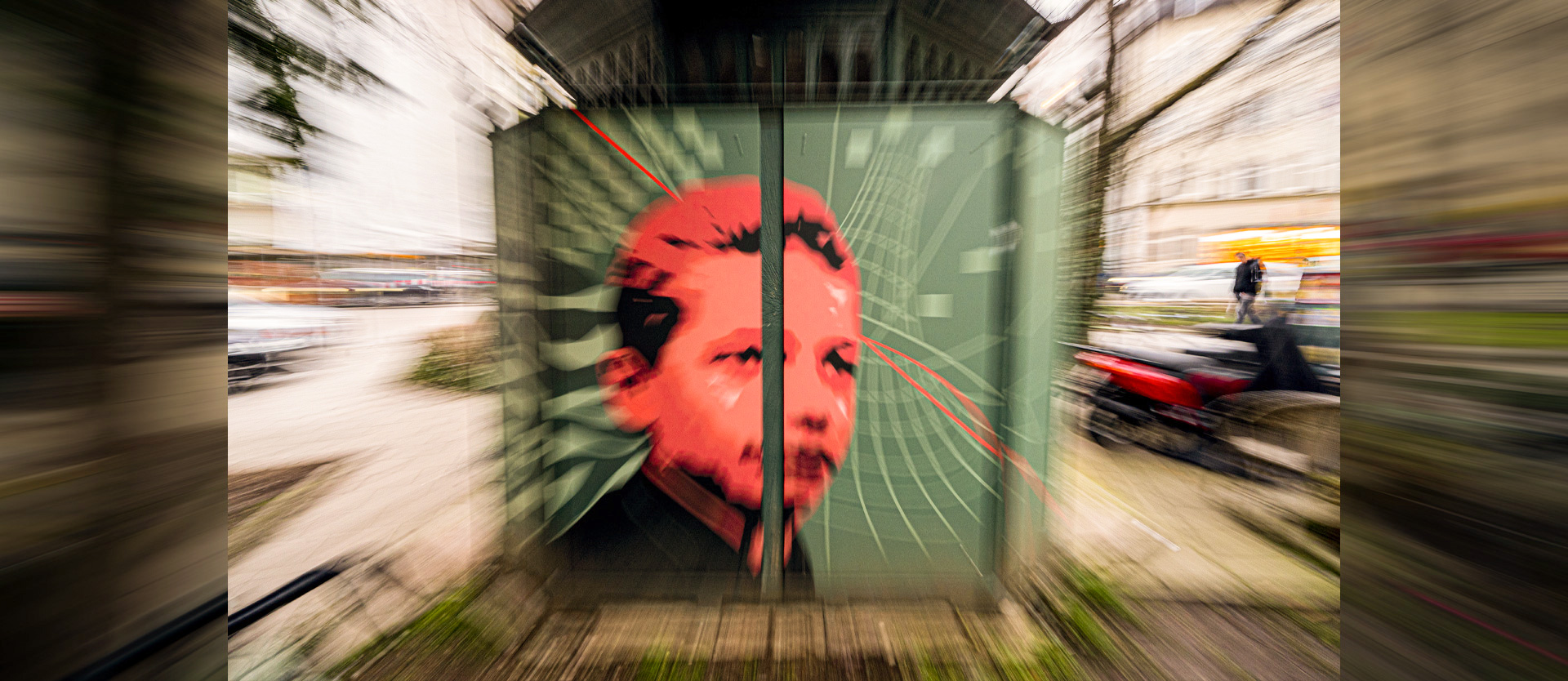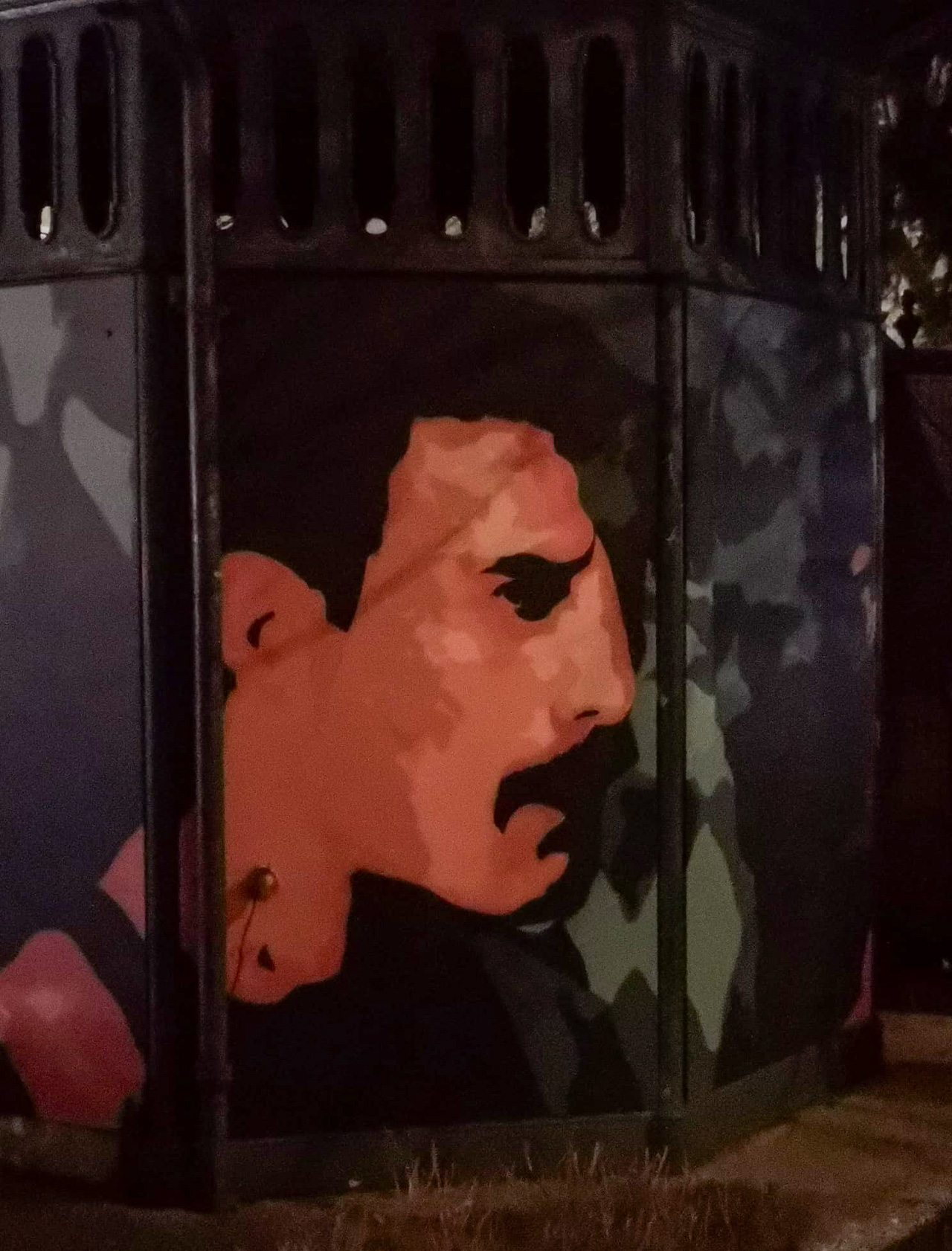
Einstein's urinal
An unconventional memorial erects an "early" monument to the physicist in the heart of Munich.

Originally, the cast-iron octagon, which unlike today's Dixie toilets is a true urban gem in the form of a sanitary facility, had stood at Munich's Stachus since 1900. In 1950, it was transferred to Holzplatz, finally abandoned in the 1990s and placed under a preservation order. The initiative to set up a memorial here for famous personalities of the Isarvorstadt came from the Munich artist and publisher Martin Arz and the barkeeper Thomas Zufall. In cooperation with the city of Munich, this project was realized in 2020. The graffiti, which was attached to panels on the venerable outhouse, was realized by the Munich team for design "Graphism".
While Freddie Mercury and Rainer Werner Fassbinder, both of whom lived excessively and worked creatively in the Glockenbachviertel for many years, can be recognized relatively easily by their characteristic physiognomy, it is much more difficult to identify Albert Einstein. For here it was not one of his iconic portraits of the elderly with white moustache and unrestrained hair growth - not to mention the boldly stuck-out tongue - that was the inspiration for the artistic realization. No, it is actually a little-known youth photo that shows the later epoch-making scientist as a 14-year-old. Although this does not make him immediately recognizable, if at all, there are good reasons for this. For Albert Einstein lived here as a child and adolescent in the neighborhood at Adlzreiterstrasse 12. When he was one year old, his parents moved to Munich, where his father Hermann and brother Jacob ran the "Electrodynamic Factory J. Einstein & Cie.". At that time, Albert Einstein's direct relatives not only electrified the Schwabing district of Munich, but also the "Schottenhammel", the first beer tent at the Oktoberfest!
From 1885 Albert attended the Catholic Petersschule at Sendlinger Tor. Three years later, he transferred to the Luitpoldgymnasium at Müllerstrasse 7. His teachers there, however, were not very fond of him, which may have been due to his behavior and conduct. "Your mere presence spoils the respect of the class for me," his class teacher is said to have said to him. Originally, Albert was supposed to take his Abitur here. But things turned out differently. His father's and uncle's company went bankrupt. As a result, the business was relocated to Pavia, near Milan, in 1894 for a new start. Albert was deregistered from the Munich Gymnasium and followed his family to Italy, from where he made his way in life. The rest is history.

Queen singer Mercury lived almost exclusively in Munich's Glockenbach district between 1979 and 1985. Photo: Veit Ziegelmaier
But the Munich biographies of his fellow urinators are also exciting. For Queen singer Mercury, who stayed almost exclusively in Munich between 1979 and 1985 and lived in the Glockenbachviertel, the Bavarian capital was a creative and in many ways welcome refuge where the world star could be himself away from the hustle and bustle of the metropolises. Here, in the then famous "Musicland" studios in Arabellapark, the rock band Queen produced a number of groundbreaking albums that further enhanced their worldwide reputation. Among them was the single "Crazy litttle thing, called love", their first number 1 hit in the USA, conceived by Mercury in a Munich bathtub. Freddie lived and loved in Munich. Legendary to this day is his debauched queer birthday party in the nightclub "Mrs. Henderson" at that time, today's dance bar "Paradiso" in Rumfordstraße 2. The shrill and eccentric party with the motto "Black and White", to which only invited guests had access, was recorded in film documents. Later, this material was used for the video for "Living on my own," the single release from Freddie's first and only solo album, which was again produced in Munich.

The cult director Rainer Werner Fassbinder lived and worked in Munich's Isarvorstadt until 1978. Photo: Veit Ziegelmaier
Fassbinder became involved in the avant-garde "Action Theater" at Müllerstrasse 12 in 1966, where he developed his concept of anti-theater. The Munich authorities were not comfortable with so much artistic turmoil, and so the stage was closed just two years later. The director, however, remained loyal to the neighborhood. He fell in love and made the "Deutsche Eiche" pub and hotel (where Adolf Hitler also resided!), still legendary in queer circles today, famous, as he used it several times as a backdrop for his films such as "Lola". After a private tragedy, he left the Glockenbachviertel in 1978.
For all Munich residents, but also tourists who do not yet know this special landmark of the Bavarian capital, a trip to this idiosyncratic memorial, where Holzstraße meets Pestalozzistraße, is recommended. And somehow, as you look at the three faces, you can't help thinking of the Queen catchy tune "We are the Champions".












